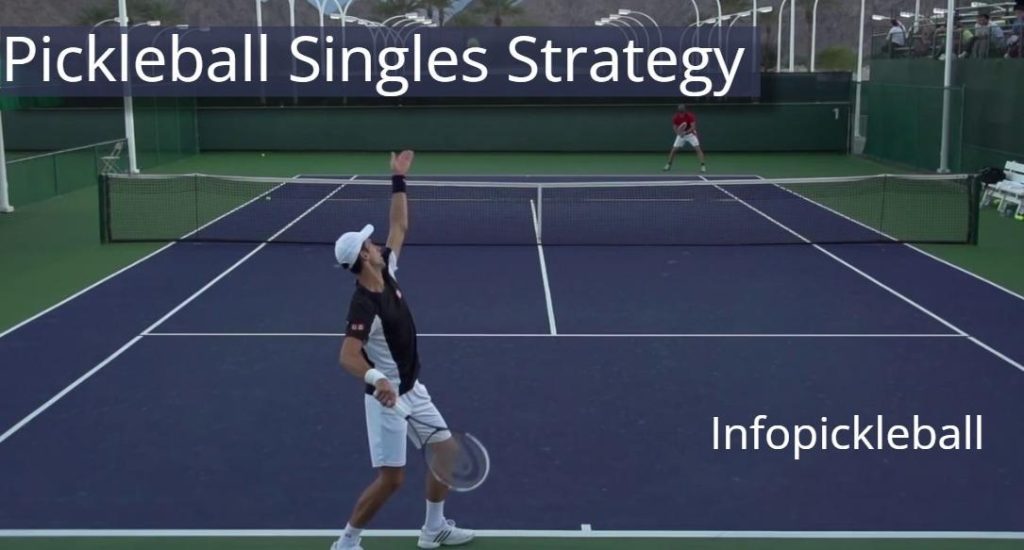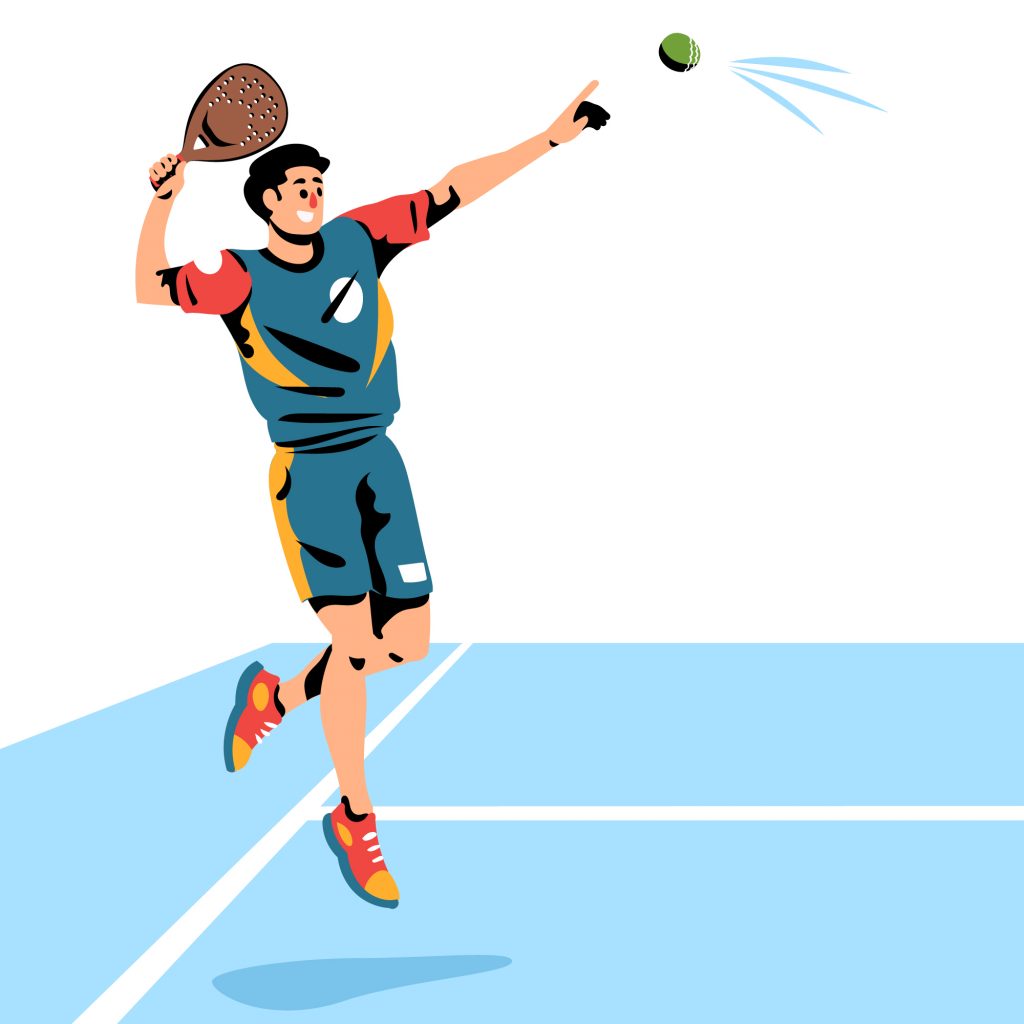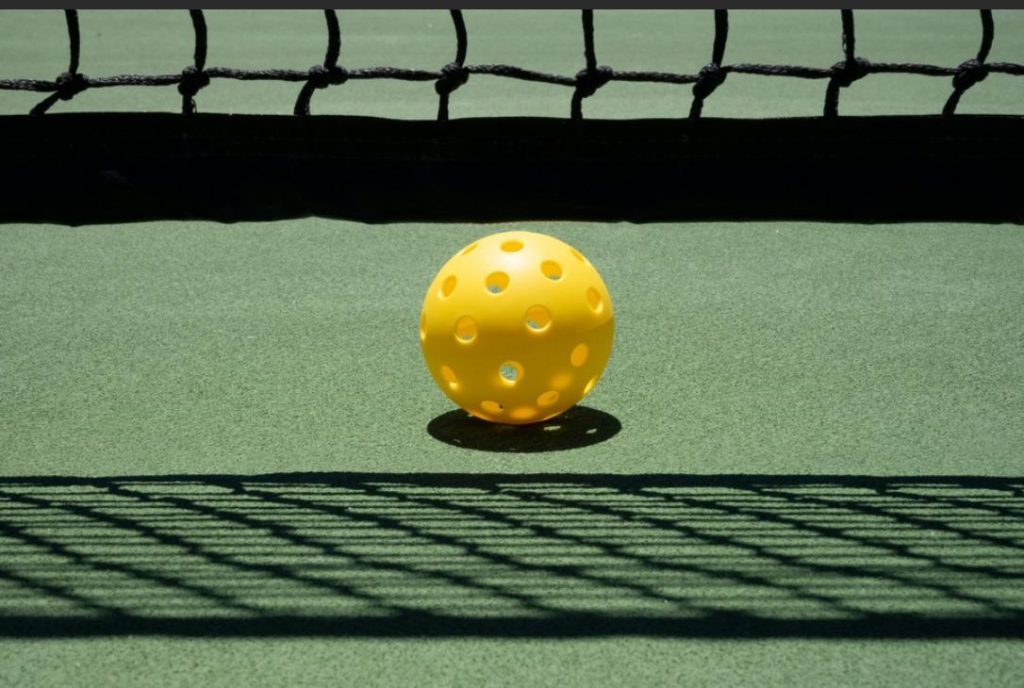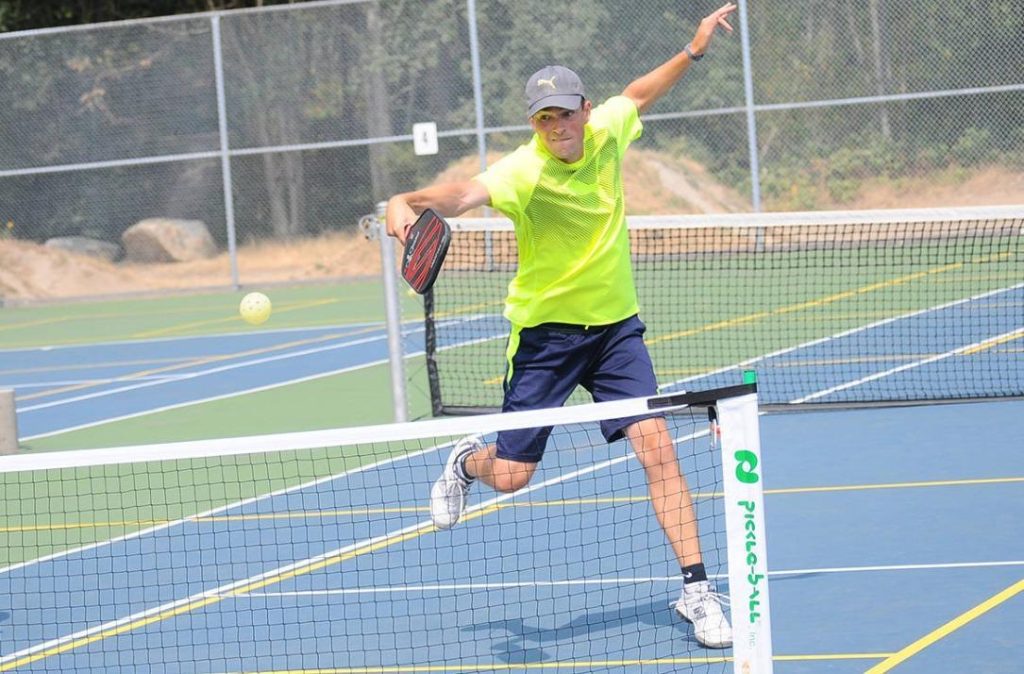

Pickleball is a popular sport, while singles pickleball is as loved as doubles pickleball.
However, the singles game is considerably different from the game of doubles. In a singles game, it’s just you and your opponent playing on the court. Since you don’t have any partner, you’ll have to rely completely on yourself (both mentally and physically) to win the match. So you must cover the full field, play every hit, and choose the best pickleball strategy. The approach in the singles game is what differentiates it from doubles.
So what is the best pickleball singles strategy you should follow? How to play a winning game?
This blog will answer all your queries related to “pickleball strategy singles” to help you improve your game in no time. What’s best? Whether you’re a beginner or a seasoned pro, all the approaches will be equally important to you.
- Consistently Serve Deep in the Pickleball Court
- Consistently Hit a Deep Return of Serve
- Follow your Return-of-Serve to the Non-Volley Line
- Track Your Shot on the Pickleball Court
- Approaching the Net
- Third Shot Drop or Third Shot Drive
- Come into the Kitchen Line
- Let Your Opponent Make the Mistake
- Exploit your Opponent’s Weaker Side
- FAQ
Before We Begin!
If you’re new to pickleball, you first need to understand all the official rules so you can refer back to them when you get confused or don’t know what to do. With this in mind, we’ve put together a detailed blog on pickleball rules, you can read it here.
Now let’s get back to the topic for today!
Key Takeaways!
- Pushing your opponent over the baseline will make it harder for them to come back and, ultimately, will make it simpler for you to position the third shot.
- On the return of serve, you should always target the weaker side of your opponent. And, in most cases, it is their backhand side.
- After serving, your goal should be to reach the net as soon as you can.
- Using the powerful crossing drive as your third shot might help you score points quickly in singles rather than simply depending mainly on the drop shot.
Consistently Serve Deep in the Pickleball Court
In singles play, you need to make sure to execute a big and deep serve to beat your opponent. While a deep serve is a key approach for doubles play, it is much more important for singles play. Pushing your opponent over the baseline will make it harder for them to come back and, ultimately, will make it simpler for you to position the third shot. You’ll have an advantage from the initial strike onward if you serve big and deep.
Although it is the standard, don’t underestimate the risk of hitting the serve out of bounds if you give yourself too little room for mistakes. Keep in mind that you only got one serve in the court but you can improve it with practice. In short, you need to be highly accurate when serving (unless, of course, you account for the wind).
Consistently Hit a Deep Return of Serve

Another best approach is to return the serve deep in your opponent’s court (near the baseline but still inside court) to make the opponent’s third shot more challenging and to allow yourself enough opportunity to react and reach it to the net (see strategy below). On the return of serve, you should always target the weaker side of your opponent. And, in most cases, it is their backhand side (see strategy below.)
As mentioned above, it’s also important to keep in mind that a deep return is a norm, but don’t make your return too close to the net, or you may miss it altogether and give your opponent an easy point.
Follow your Return-of-Serve to the Non-Volley Line
Like in doubles, you need to ensure that you follow the return-of-serve toward the non-volley zone as much as you can. Why? Because your opponent will need to allow the ball to bounce on his/her court— and with a strong return, you’ll be in the lead at the line. Even if your return went to the corner, you would still hold the advantage.
Track Your Shot on the Pickleball Court
Instead of running to the kitchen line or non-volley line after hitting your third shot as the server or receiver, you should track the path of your hit on the pickleball court.
Wondering why? Let’s elaborate further!
If you pay attention to the trajectory of the shot, you’ll be able to position yourself between your opponent and the court’s side that is nearest to them. This is significant since it drives the opposing player to play a strike either:
- Towards the court’s side that you have already covered, or
- Crosscourt— it is a harder shot for the opponent. Plus, it will buy you time to reach the passing strike because it travels a greater distance.
Approaching the Net

Each hit requires the ball to cross the net. Therefore, it is important for you to get your ball over the net to keep playing the game. While serving, if your ball strikes the net and goes inside the service area of your opponent— it is considered a “let” and you earn another chance to serve. Contrary, if your ball strikes the net and it falls on your side or travels beyond bounds— it is a “fault,” and your opposing player will earn serve.
So which approach you should follow?
After serving, make an effort to reach the net. After serving, your goal should be to reach the net as soon as you can. Driving your opposing player toward the net will force them to lob the ball over you, giving you the upper hand. Plus, if the opponent moves throughout the court to take your shot, you’ll still benefit.
Third Shot Drop or Third Shot Drive
Do you get confused when deciding whether you should go with a drop shot or a drive as your third shot? No worries!
The selection of either drop or drive depends on some factors such as:
- Depending on your own style of play.
- Your game’s skills.
- How well the strike performs against the opposition.
But there are a few situations that make one more effective than the other. All in all, you should consider the following situations while determining whether to play a drive or drop as your third shot:
- If you play the drive shot more effectively, I suggest using more of it as your third shot. This is particularly relevant if your competitor struggles with pace on the field.
- If you play drop shots more effectively, don’t hesitate to go with a third shot drop in this situation.
- If your opposing player strikes a serve return that remains low in the air, you should go with a third shot drop. Let’s understand why! Suppose your opponent backspins the ball or strikes it with a slice, it’ll be hard playing a drive (hitting up) since the ball is low.
Pro Tip
Players frequently use the “third shot drop” in doubles. Singles is a faster game of power, as we have already stated. Using the powerful crossing drive as your third shot might help you score points quickly in singles rather than simply depending mainly on the drop shot.
Come into the Kitchen Line
One thing that both singles and doubles play have in similar is that the huge number of points are scored near the kitchen line (also known as a non-volley line). Therefore, getting to the kitchen is critical. This is particularly the case in singles play since going into the kitchen line allows you to block off the angles of your opponent in the field.
Using these pickleball singles strategy tips related to the kitchen line will help you win more points:
- Return a huge, deep serve and target your opponent’s weaker side corner.
- On the return of serve, track the path of the ball.
- On the third shot, go towards the kitchen line or non-volley area to effectively block off your opposition’s angles.
Let Your Opponent Make the Mistake

The momentum matters a lot in pickleball. Sometimes I see players try to hit winning shots and end up making more mistakes. You shouldn’t do the same!
Instead, you should force your opponent to go for such shots and make it easy for you to enjoy more points. A bad strike by your opposition is far better than a bad strike by your side. Isn’t it?
Exploit your Opponent’s Weaker Side
Each player possesses both a strong and a weak side. For the majority in this game, their forehand strike with their dominant hand is stronger than their backhand strike, which is weaker. If you can, take advantage of the weaker side by serving, returning, and volleying towards it.
FAQ
1. Effectively deep serve on the pickleball court.
2. Hit a deep return of serve on a consistent basis.
3. Keep track of your return-of-serve toward the non-volley area.
4. Take advantage of the weaker side of your opponent.
5. Allow your opponent to commit the mistake.
The best way to train yourself for the singles game is by practicing several matches with different partners or players. By playing consistently, you learn new techniques and adapt the strategies more quickly.
While practicing, follow the below tactics:
• Begin by warming up with your partner. Start at the net & strike the ball to each other softly.
• Serving from the center of the field and aim toward the corner. With each strike, your mate recovers and returns.
• When practicing the shot, one player sends the strike to the back corners while the other races to get it.
• Keep practicing on both sides. You should not limit yourself to one corner. Instead, move to the center of the baseline after each hit.
• Just the server may win points.
• Until a mistake happens, the server keeps on serving. Following that, the receiver serves.
• If your scoring shows an even number, you’ll need to play from the right service field. Contrary, if the scoring shows an odd number, you’ll need to play from the left service field.
• In singles, the server’s scoring is announced first, followed by the receiver’s score.
A pickleball game called skinny singles quite resembles the techniques and stroke choices you use when playing doubles. You’ll only have half of the court to play it with your opponent. Therefore, you must strike the ball so that it travels over the same portion of your opponent’s court as it was served into.
Wrap Up
That being said, our blog for “pickleball strategy singles” comes to an end!
Compared to a doubles game, pickleball singles is often more attacking. Your degree of fitness will be put to the test, and you’ll run more than twice as much as you do in doubles. Above all, you’ll have to serve hard and far, and you must pursue immediate wins rather than putting too much emphasis on your short game.
A vital approach to follow is the ability to pass the ball forcefully out of your opponent’s reach—requiring you to practice using the entire court, including line drives and cross-court hits. The pickleball singles tips mentioned above will surely help you improve your game.
If you want to learn doubles strategies, please refer to our detailed article here.

Hi, I’m Sana Sabir. I’m a freelance content writer from Pakistan. I am passionate about fitness and sports, so much so that it’s the reason my career has taken off. My background is in business studies and I love to write about fitness and sports-related topics.
I also write articles on other niches like healthcare, fashion, and lifestyle. Being a fitness lover who has always been fascinated by the human body and how it works, I had always wanted to be a fitness writer since an early age. I enjoy trying new sports, one of my favorites of which is pickleball.
I’ve been writing for 3 years now, and my work has been published on many fitness, health, and lifestyle blogs. I always entertain my readers with some interesting and informational articles. To ensure my articles are genuine and relevant, I perform in-depth research, explore case studies, and read books on the topic before writing. Besides writing, I love painting, cooking, and gardening.
